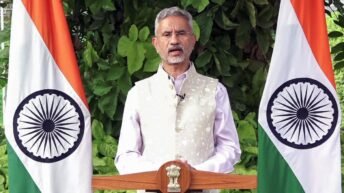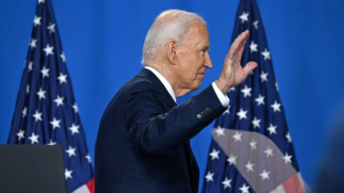|
Listen to article
Getting your Trinity Audio player ready...
|

The September 5, 2022, suicide attack on the Russian embassy in Darul Aman area, Kabul, that killed six persons including two staffers and injured several persons, is a serious assault on Russian sovereignty, similar to the blast that killed a Russian journalist Darya Dugina in Moscow on August 20, 2022. The victims included the embassy’s second secretary and a Russian security guard.
While the motive of the attack on the Russian embassy is not clear, the Taliban fighter, Tariq Logari, was killed; later, Islamic State–Khorasan Province (ISKP) claimed responsibility. Observers note that some Taliban fighters standing close to the embassy gate were also killed. The toll could get higher as several Afghan students and Afghans with residences in Russia were waiting outside the embassy for visas; many residents claimed to have lost family members, especially young students. Al Jazeera reported that up to 25 persons were killed.
ISKP has been recruiting volunteers in Afghanistan over the past few months, buying weapons from the black market, as well as from Taliban commanders. According to CNN, a spokesman of Kabul’s police said that the Afghan security forces stationed near the embassy had identified the suicide bomber among the persons outside the building and shot him, as a result of which his explosives went off.
This incident comes close on the heels of an explosion in Herat’s Guzargha mosque, on September 2, 2022, in which Maulawi Mujib Rehman Ansari and at least 46 persons were killed and several dozens injured, according to hospital sources. Ansari advocated violence against the Shias. Mullah Baradar’s assistant, Abdullah Azzam, stated that Maulawi Ansari was killed after he left a meeting to discuss the economic situation. Baradar was at that meeting.
It is clear that the Islamic State (ISIS) poses a serious threat to the Taliban’s Islamic Emirate, even as several other rebel groups are engaged in the fight against the Taliban. Other militant groups that have gained a foothold in the country include Al-Qaeda, the Islamic Union of Uzbekistan (IMU), the East Turkestan Islamic Movement (ETIM), Jamaat Ansurallah (or Tajik Taliban), and the Pakistani Taliban.
Thus, one year after it seized power in Kabul, the Taliban leadership has failed to stabilise its rule and is grappling with various jihadi groups that have found shelter in Afghanistan. In recent days, there have been devastating attacks in Kabul, Herat, Kunar and Helmand provinces. The Taliban, unable to establish dominance in Afghanistan, are reportedly trying to suppress the news of casualties.
In another blast in Kabul on September 3, 2022, Haji Ahmad, deputy head of D10 (Reasateee Mohafizaat) was assassinated along with five Taliban cadres. In a third blast, sources in PD-3 (police district) said Wali Mehsud, the head of the Tehrik-i-Taliban Pakistan (TTP) was seriously injured.
The Afghanistan-based TTP on September 2 claimed to have killed a police constable in ‘self-defence’ in Dera Ismail Khan district, Khyber Pakhtunkhwa, Pakistan. This is the first such attack since the Taliban attempted to establish a truce between the TTP and Pakistani security forces in April.
As the violence in Afghanistan escalates, observers point out that most of Afghanistan’s top clerics and Islamist leaders were killed in mysterious circumstances in the years preceding the Taliban takeover in 2021. While conclusions would be premature, it is possible that knowledge of these killings was a factor in Washington’s decision to pull out of Afghanistan, in the belief that the Doha group would be able to control the country.
However, others point out that after the assassination of Mullah Mujib Ansari on September 2, 2022, few top leaders such as Gulbuddin Hekmatyar (now 73), are left in Afghanistan. It is pertinent to note that the Head of State, Hibatullah Akhundzada, has not been seen by citizens or independent witnesses, till date.
Journalist Tajuden Soroush (Iran International TV) reported that two Uzbekistani fighters (Islamic Movement of Uzbekistan, IMU), who came to Faryab province recently to help the Taliban in carrying out a house-to-house search, were assassinated there. Another foreign fighter was killed in a mysterious conflict at Takhar’s border with Tajikistan, on September 3, 2022.
Soroush reported that documents received by the news channel, AFIntlBrk, reveal that an Al-Qaeda member, Abu Hasan Al-Mujahid, who came to Afghanistan from Egypt nearly two months ago, was killed along with four Taliban fighters in an attack by an American drone in the Dehmazang area of Kabul on September 2, 2022. The document stated that a bulletproof Land Cruiser and Hilux were targeted while the Al Qaeda members were on their way to the house of a Taliban official. The dead included M. Mobarez Jahadullah Farahi, Hejrat Quraishi and Abu Omer Logari.
Meanwhile, the National Resistance Front (NRF) published its annual report which stated that in the past year, the Taliban have killed 121 NRF members while the NRF has killed 715 Taliban members. It added that the Taliban have arrested, tortured and shot 2,299 soldiers of the previous government and civilians in this period.
NRF’s foreign relations chief, Ali Maisam Nazary, claims that the NRF controls some parts of the country, especially Panjshir and Andarab district of Baghlan province. Regretting the lack of international support, Nazary said the international community needs to step up and help the NRF to defeat “international terrorism” before it becomes a greater threat, and “before we see terrorist attacks originating and emanating from Afghanistan and the region in Europe, North America and elsewhere in the world.”
Another group that has joined the fight against the Taliban is the Afghanistan Islamic National & Liberation Movement, or Afghanistan Liberation Movement, headed by Khalid Aziz. The ALM’s spokesperson Nasser Waziri said that while the NRF was dominant in the north, the Afghanistan Liberation Movement had established a presence in the south, where he claimed the Taliban regime was most vulnerable.






Add comment